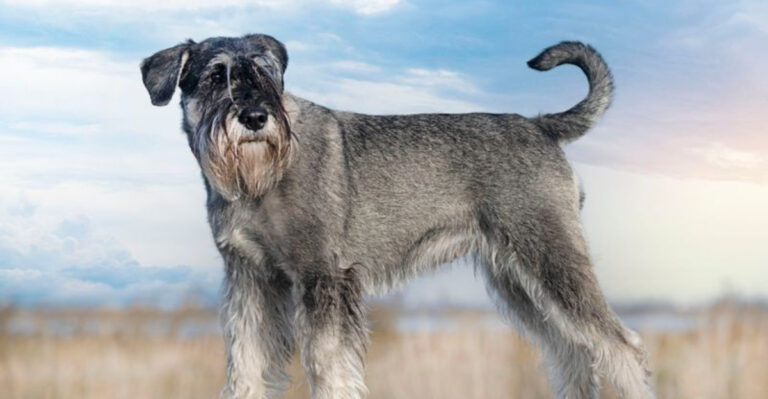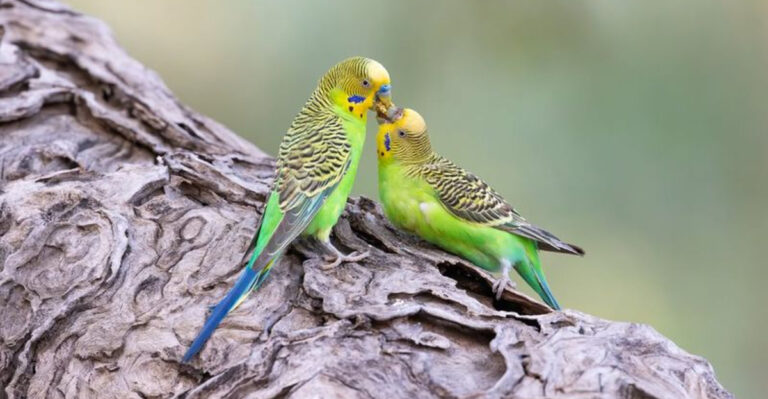Celebrating World Turtle Day: 13 Ancient Turtle Species That Outlived Dinosaurs

Turtles are among Earth’s most remarkable survivors, with lineages stretching back over 220 million years. While dinosaurs vanished in the mass extinction event 66 million years ago, many turtle species weathered the catastrophe and continued their slow, steady march through time.
Today, as we celebrate World Turtle Day, let’s marvel at these living fossils whose ancestors watched dinosaurs come and go.
1. Proganochelys – The Pioneer Shell-Bearer
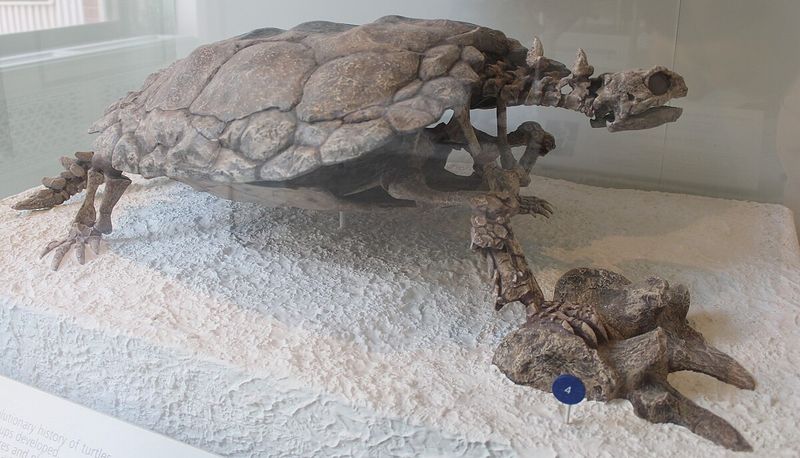
Walking the Earth 210 million years ago, Proganochelys couldn’t tuck its head into its shell like modern turtles. Instead, this prehistoric pioneer had a spiky neck and tail for protection.
Scientists discovered complete fossils in Germany and Thailand, revealing this car-sized creature’s primitive features. Unlike today’s turtles, Proganochelys had teeth and couldn’t fully retract its limbs – evolutionary stepping stones to modern turtle anatomy.
2. Stupendemys – The Volkswagen-Sized Lake Dweller

Imagine a turtle so massive it could carry a person on its back! Stupendemys geographicus boasted shells reaching 11 feet long, making it the largest freshwater turtle ever.
Flourishing 5-10 million years ago across South American rivers, males sported impressive horned shells for combat. Their enormous size evolved as protection from prehistoric crocodilians sharing their habitat. Despite their intimidating dimensions, these gentle giants mainly consumed aquatic plants and fruits.
3. Carbonemys – The Giant That Ate Crocodiles
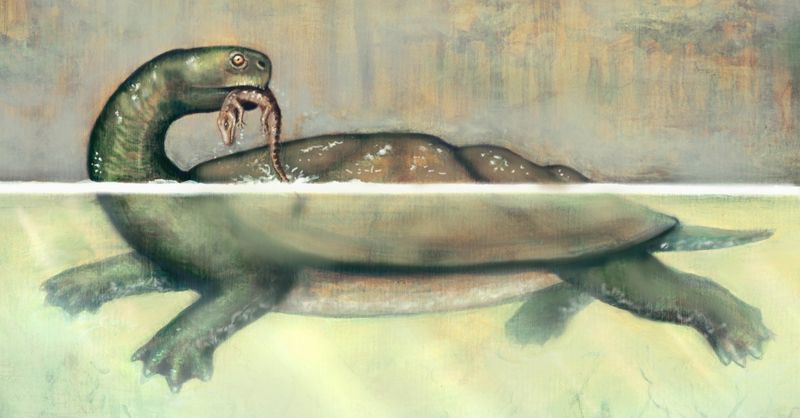
Found in Colombian coal mines, Carbonemys cofrinii turned the tables on prehistoric predators. This 7-foot turtle with a head bigger than a football actually hunted and devoured crocodilians!
Evolving just 5 million years after dinosaurs vanished, Carbonemys thrived in a world where smaller creatures rapidly expanded to fill ecological niches. Its powerful jaws could deliver bone-crushing bites, making it an apex predator of Paleocene waterways rather than typical turtle prey.
4. Meiolania – The Horned Tank Of The Pacific
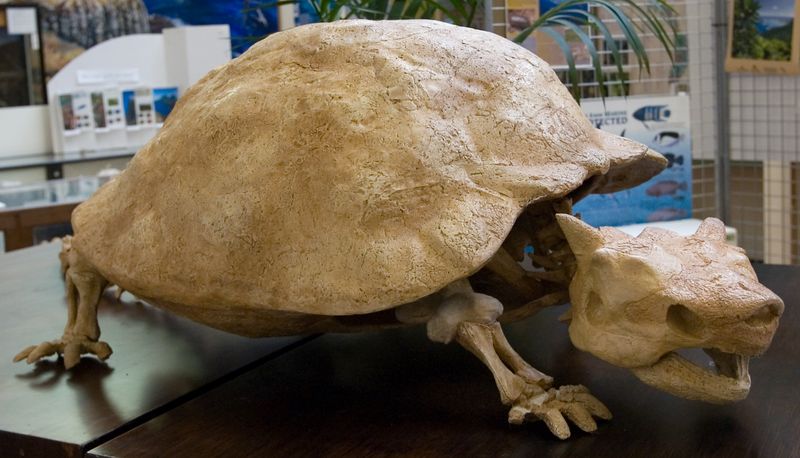
Sporting cow-like horns and a club tail, Meiolania looked more like a fantasy creature than a turtle. This bizarre reptile roamed Australia and Pacific islands until surprisingly recently – just 2,000 years ago!
Human hunters likely caused Meiolania’s extinction. At 8 feet long and weighing up to a ton, these herbivores had no natural predators until we arrived. Their elaborate horns weren’t for fighting but likely played roles in mating displays and species recognition.
5. Platychelys – The Leaf-Mimic Master

Nature’s first camouflage artist? Platychelys’ bumpy, leaf-shaped shell helped it disappear among pond vegetation 150 million years ago. This Jurassic wonder employed ambush tactics to catch prey.
Found primarily in European fossil beds, Platychelys had a uniquely flattened shell with leaf-like projections. While dinosaurs stomped through forests above, these stealthy hunters waited motionlessly in shallow waters. Their specialized shell knobs perfectly mimicked floating vegetation – evolutionary evidence that survival often favors the sneaky.
6. Odontochelys – Half-Shell Pioneer
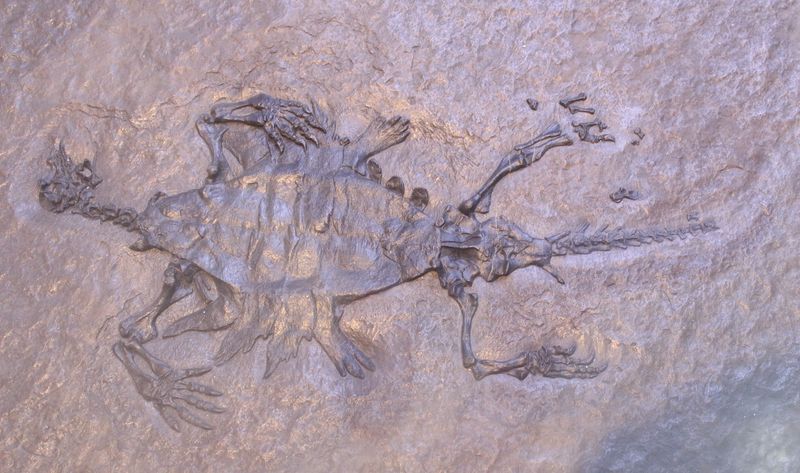
Meet turtle evolution’s missing link! Odontochelys had only a bottom shell (plastron) but no top shell (carapace), revealing how turtle shells developed. Swimming in Chinese seas 220 million years ago, it retained primitive teeth unlike modern turtles.
Paleontologists celebrate this discovery as evolutionary gold – clear evidence of turtle shell development stages. Its name literally means “toothed turtle with half a shell.” Odontochelys shows nature’s gradual approach to innovation, developing bottom protection first before completing the full-shell design.
7. Allaeochelys – The Eternally Embracing Couples
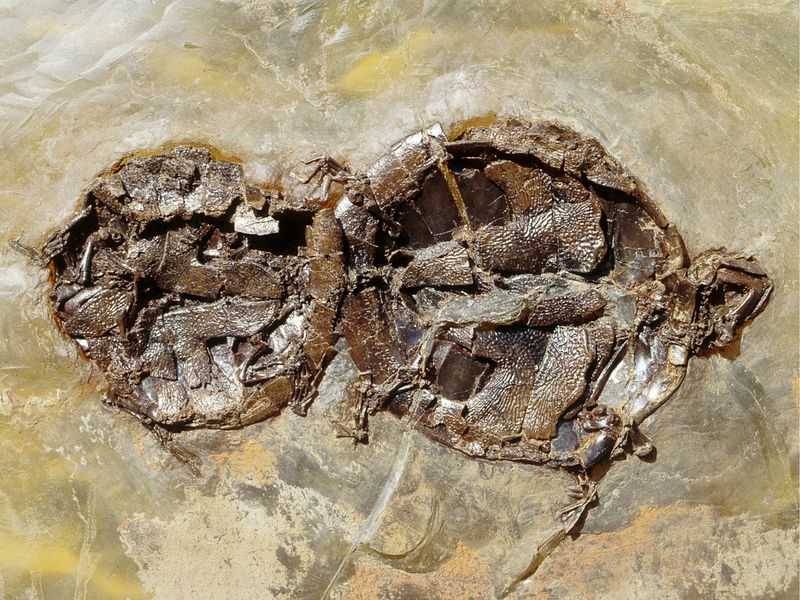
Love frozen in time! Allaeochelys fossils have been found in pairs, mating – the only vertebrates ever discovered fossilized during copulation. These 47-million-year-old turtles died while embracing in an ancient German lake.
Scientists believe toxic algae blooms quickly killed and preserved these intimate moments. Allaeochelys resembled modern softshell turtles with leathery carapaces ideal for swift swimming. Their remarkable fossils provide unprecedented insights into prehistoric turtle reproduction – literally catching them in the act across millions of years.
8. Nanhsiungchelyidae – The Dinosaur-Era Land Giants

Roaming alongside dinosaurs, Nanhsiungchelyids were massive land turtles with spiky, armored shells that could reach 8 feet long. These Asian and North American behemoths survived by being virtually indestructible.
Even Tyrannosaurus rex would think twice before attacking these walking fortresses! Their distinctive shells featured elaborate spikes and ridges for defense. Unlike many prehistoric turtles that lived in water, Nanhsiungchelyids conquered dry land, developing elephant-like feet to support their tremendous weight while foraging for plants.
9. Archelon – The Sea Monster With A Leather Back
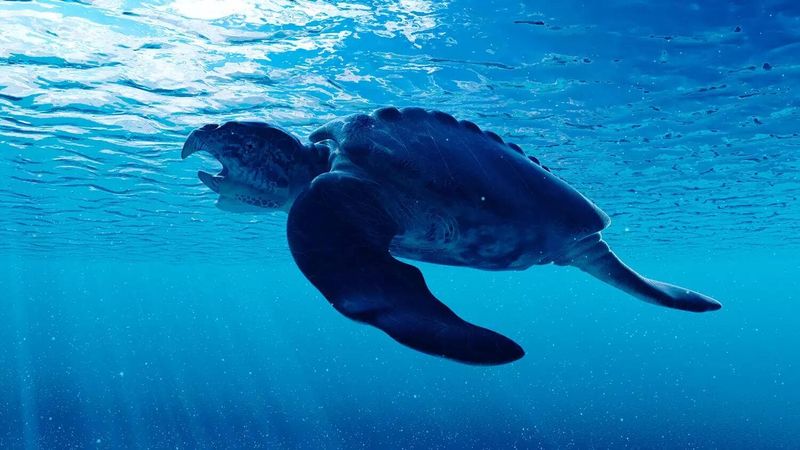
Measuring up to 15 feet from flipper to flipper, Archelon ruled the ancient seas when T-Rex dominated land. Unlike modern sea turtles, this giant had a leathery carapace rather than a hard shell.
Archelon’s massive size helped it maintain body temperature in cool waters. Fossil evidence shows these gentle giants fed primarily on jellyfish and squid. Their flippers evolved perfectly for powerful ocean swimming, leaving dinosaurs far behind on shore.
10. Protostega – The Second-Largest Sea Turtle Ever
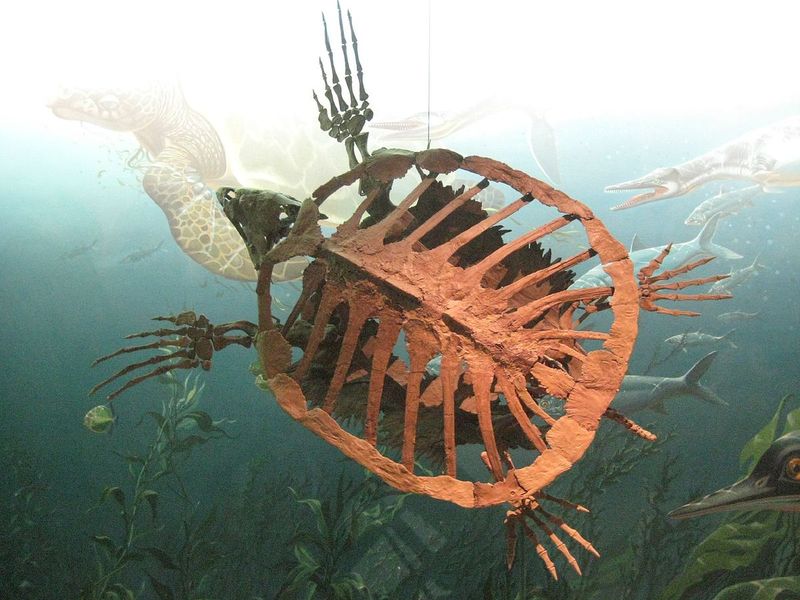
Cruising Cretaceous oceans at up to 85 million years ago, Protostega reached car-sized proportions with 10-foot flippers. Only Archelon grew larger among ancient sea turtles.
Kansas was once underwater, and Protostega fossils are commonly found there. These massive marine reptiles had reduced shells compared to modern sea turtles – more like leather armor than hard shields. Their hydrodynamic design and powerful flippers made them excellent swimmers, escaping the catastrophe that claimed dinosaurs.
11. Basilemys – The Dinosaur’s Neighbor
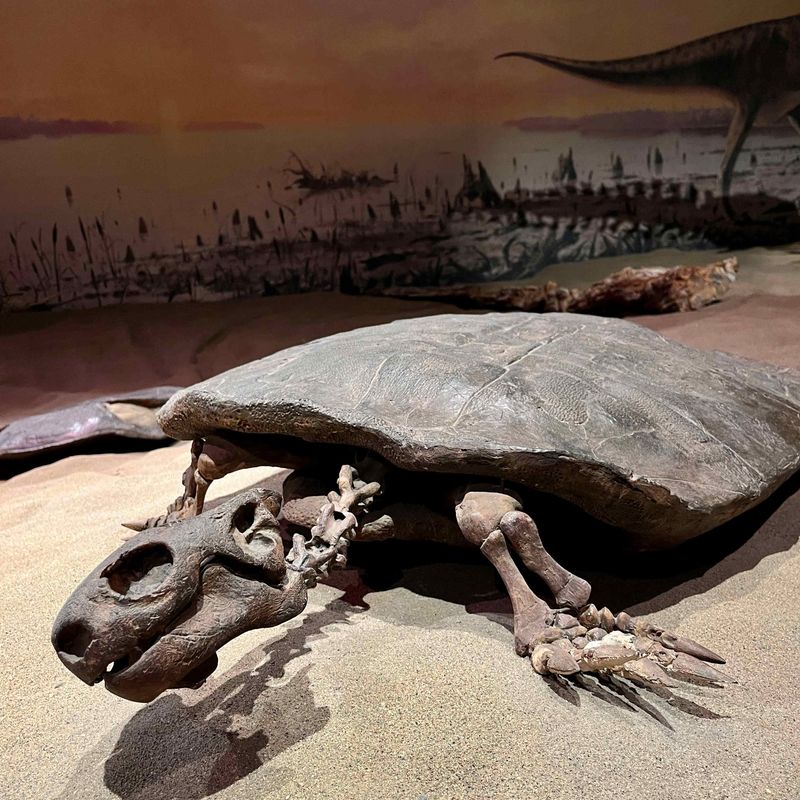
Built like a prehistoric tortoise on steroids, Basilemys had a distinctive domed shell covered in intricate patterns. Living alongside Tyrannosaurus rex, this land-dwelling giant reached 3 feet long.
Basilemys developed shovel-like forelimbs for digging up roots and tubers. Their powerful legs supported their considerable weight as they trudged through Late Cretaceous landscapes. While T. rex and other dinosaurs perished in the mass extinction, Basilemys’ relatives adapted and survived, showcasing turtles’ remarkable resilience.
12. Toxochelys – The Transitional Sea Pioneer
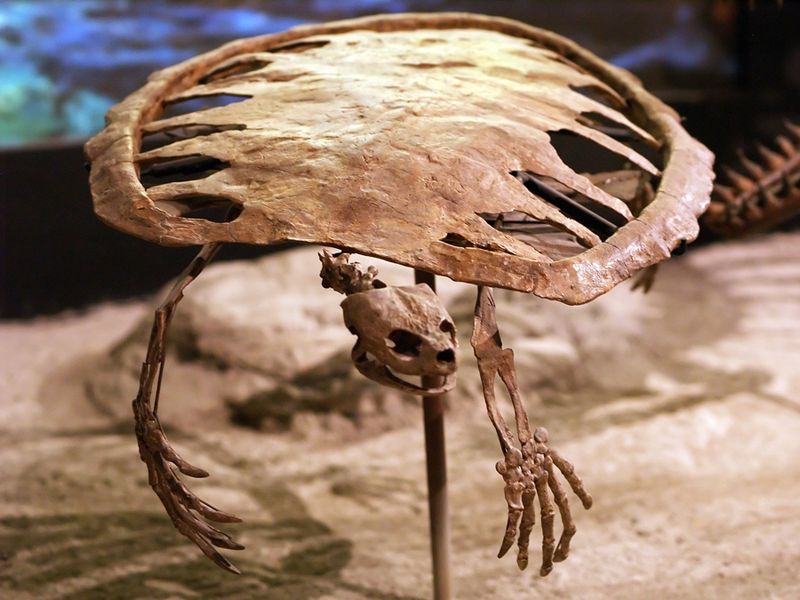
Smaller than its giant relatives, Toxochelys represents a crucial evolutionary link between ancient and modern sea turtles. Swimming in shallow Cretaceous seas, it showed mixed characteristics from various turtle lineages.
Fossil discoveries in Kansas and Alabama reveal Toxochelys had partially webbed feet rather than full flippers. This transitional feature demonstrates evolution in action – catching a species midway through adaptation. Their broad, streamlined shells provided excellent buoyancy while their specialized jaws crushed shellfish with ease.
13. Boremys – The River Dweller With Punk-Rock Spikes

Sporting a mohawk-like ridge of spikes along its shell, Boremys would look right at home at a punk rock concert! This freshwater turtle inhabited North American rivers when T. rex ruled the land.
Boremys’ distinctive spiky shell wasn’t just for show – it provided crucial protection from large predatory fish and crocodilians. Their specialized jaws could crush hard-shelled prey like clams and snails. Amazingly adaptable, these turtles survived the asteroid impact that wiped out dinosaurs, with descendants still swimming in modern rivers.


